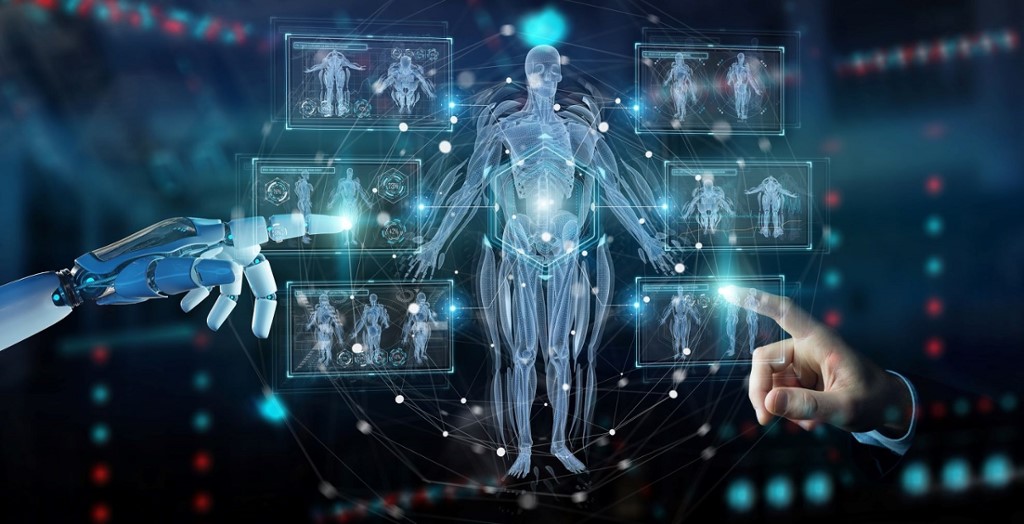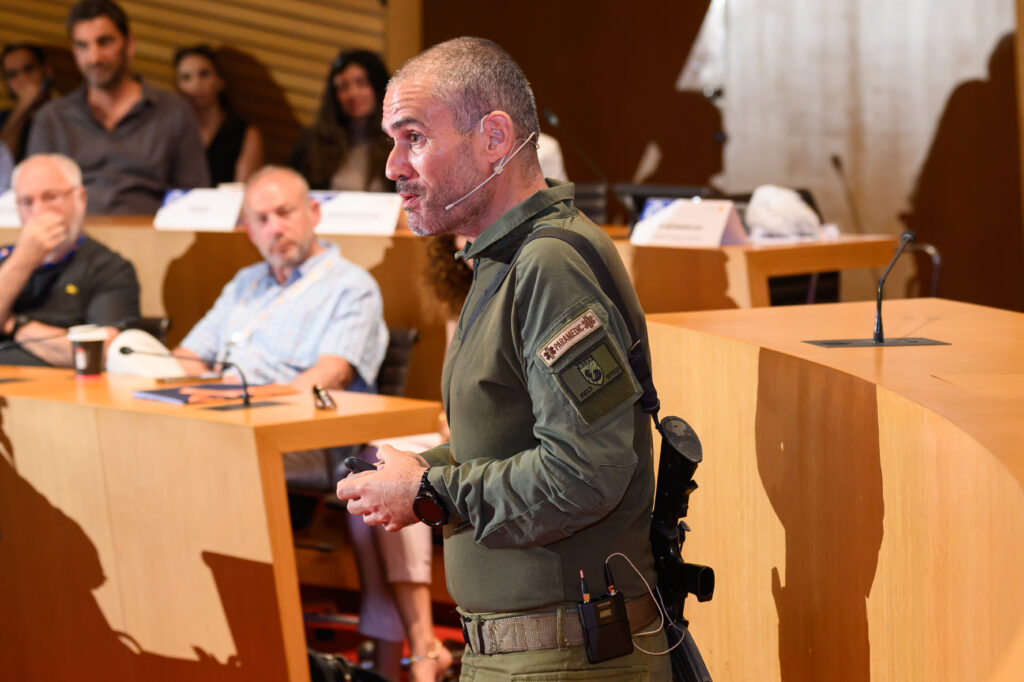
Hand Gesture Recognition System Assists Doctors and Prevents Infection During Surgery (includes video)
Hand Gesture Recognition System Assists Doctors and Prevents Infection During Surgery (includes video)
June 29, 2008
Medical Research, Press Releases, Robotics & High-Tech
NEW YORK, June 16, 2008 — Researchers at Ben-Gurion University of the Negev (BGU) in Israel have developed a new hand gesture recognition system, tested at a Washington, D.C. hospital, that enables doctors to manipulate digital images during medical procedures by motioning instead of touching a screen, keyboard or mouse which compromises sterility and could spread infection, according to a just released article.
The June article, “A Gesture-based Tool for Sterile Browsing of Radiology Images” in the Journal of the American Medical Informatics Association (2008;15:321-323, DOI 10.1197/jamia.M24), reports on what the authors believe is the first time a hand gesture recognition system (Gestix) was successfully implemented in an actual “in vivo” neurosurgical brain biopsy. It was tested at the Washington Hospital Center in Washington, D.C.
According to lead researcher Juan P. Wachs, a recent Ph.D. recipient from the Department of Industrial Engineering and Management at BGU, “A sterile human-machine interface is of supreme importance because it is the means by which the surgeon controls medical information, avoiding patient contamination, the operating room (OR) and the other surgeons.
This could replace touch screens now used in many hospital operating rooms which must be sealed to prevent accumulation or spreading of contaminants and requires smooth surfaces that must be thoroughly cleaned after each procedure – but sometimes aren’t. With infection rates at U.S. hospitals now at unacceptably high rates, our system offers a possible alternative.”
Helman Stern, a principal investigator on the project and a professor in the Department of Industrial Engineering and Management, explains how Gestix functions in two stages: “[There is] an initial calibration stage where the machine recognizes the surgeons’ hand gestures, and a second stage where surgeons must learn and implement eight navigation gestures, rapidly moving the hand away from a neutral area and back again. Gestix users even have the option of zooming in and out by moving the hand clockwise or counterclockwise.”
To avoid sending unintended signals, users may enter a “sleep” mode by dropping the hand. The gestures for sterile gesture interface are captured by a Canon VC-C4 camera, positioned above a large flat screen monitor, using an Intel Pentium and a Matrox Standard II video-capturing device.
The project lasted for two years; in the first year Juan Wachs spent a year working at IMI (Washington D.C.) as an informatics fellow on the development of the system. During the second year, there was a contract which ended between BGU and WHC (Washington Hospital Center) where Wachs continued working at BGU with Professors Helman Stern and Yael Edan, the project’s principle investigators.
At BGU, several M.Sc theses, supervised by Prof. Helman Stern and Yael Edan, have used hand gesture recognition as part of an interface to evaluate different aspects of interface design on performance in a variety of tele-robotic and tele-operated systems. Ongoing research is aiming at expanding this work to include additional control modes (e.g., voice) so as to create a multimodal telerobotic control system.
In addition, Dr. Tal Oron and her students are currently using the gesture system to evaluate human performance measures. Further research, based on video motion capture, is being conducted by Prof. Helman Stern and Dr. Tal Oren of the Dept. of Industrial Engineering and Management and Dr. Amir Shapiro of the Dept. of Mechanical Engineering. This system, combined with a tactile body display, is intended to help the vision impaired sense their surroundings.
ABOUT AMERICANS FOR BEN-GURION UNIVERSITY
By supporting a world-class academic institution that not only nurtures the Negev, but also shares its expertise locally and globally, Americans for Ben-Gurion University engages a community of Americans who are committed to improving the world. David Ben-Gurion envisioned that Israel’s future would be forged in the Negev. The cutting-edge research carried out at Ben-Gurion University drives that vision by sustaining a desert Silicon Valley, with the “Stanford of the Negev” at its center. The Americans for Ben-Gurion University movement supports a 21st century unifying vision for Israel by rallying around BGU’s remarkable work and role as an apolitical beacon of light in the Negev desert.
About Ben-Gurion University of the Negev
Ben-Gurion University of the Negev embraces the endless potential we have as individuals and as a commonality to adapt and to thrive in changing environments. Inspired by our location in the desert, we aim to discover, to create, and to develop solutions to dynamic challenges, to pose questions that have yet to be asked, and to push beyond the boundaries of the commonly accepted and possible.
We are proud to be a central force for inclusion, diversity and innovation in Israel, and we strive to extend the Negev’s potential and our entrepreneurial spirit throughout the world. For example, the multi-disciplinary School for Sustainability and Climate Change at BGU leverages over 50 years of expertise on living and thriving in the desert into scalable solutions for people everywhere.
BGU at a glance:
20,000 students | 800 senior faculty | 3 campuses | 6 faculties: humanities & social sciences, health sciences, engineering sciences, natural sciences, business & management, and desert research.
For all press inquiries, please contact:
James Fattal, J Cubed Communications
516.289.1496



